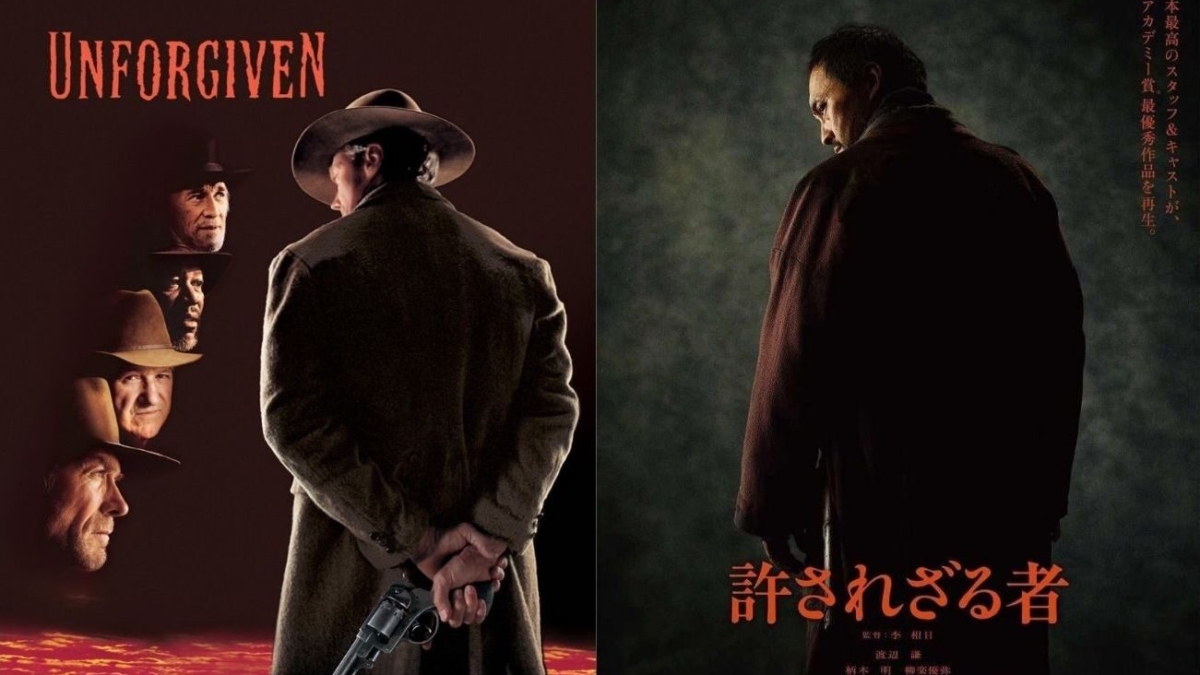Written By: Nathan Liu
This article contains spoilers for both versions of “Unforgiven.”
When a prostitute is disfigured by one of her clients, and the local sheriff does nothing to punish the perpetrator, the scarred woman’s co-workers pool their resources and place a bounty on the evil-doer’s head. This attracts the attention of several hired guns, including an old man, desperate to escape his violent past. He is reluctant to kill again, but his children need the money, so he, his close friend and a brash young kid set off to collect the bounty. The man insists that this isn’t him returning to his old ways, that his dearly departed wife cured him of violence and wickedness. But as he carries on along the journey, he realizes that he never truly left the past behind.
That’s the premise of Clint Eastwood’s 1992, Best Picture-winning Western, “Unforgiven.” It’s also the premise of Lee Sang Il’s 2013 Japanese-language remake, starring Ken Watanabe as the reluctant killer Eastwood played in the original. It might seem odd, a Japanese director adapting a Western into a samurai film, until you remember the long history of exchange between the two genres.
Numerous samurai classics were translated into Westerns, most notably Akira Kurosawa’s “Seven Samurai,” which formed the basis for Jon Sturges’ “The Magnificent Seven.” Clint Eastwood got his big break starring in Sergio Leone’s “A Fistful Of Dollars,” which was an unlicensed remake of Kurosawa’s “Yojimbo.” In some cases, the genres were literally combined, as with Terrence Young’s “Red Sun,” the story of a samurai in the Old West, hunting down some bandits who stole his boss’s property. Considering all of this, along with the fact that Ken Watanabe actually starred in the Eastwood-directed “Letters From Iwo Jima,” it almost feels inevitable that “Unforgiven” would be turned into a samurai film. Almost being the key word.
While it’s extremely common for American directors to be inspired by, and even directly adapt Asian cinema, it’s very rare to see the opposite. There have been a few outliers in the past — Nancy Meyers’ “What Women Want” was remade in both China and India, and Takashi Miike directed an English-language Western pastiche, “Sukiyaki Western Django” — but those films are the exception, rather than the rule. For the most part, white filmmakers have seen Asian movies, and then reinterpreted them for a Western audience. And this has created something of a power imbalance, with Western artists being the ones with the ability to speak on behalf of Asian filmmakers.
Hollywood movies have more reach, and generally much bigger budgets, than those made in other parts of the world. An American remake of a Hong Kong film, like Martin Scorsese’s “The Departed,” will generally be watched by more people, and earn more critical appraisal than the film it’s based on. Even now, after Bong Joon-Ho’s “Parasite” won Best Picture at the Oscars, people still seem to view films not in English, or starring Asian leads, as too opaque for a large, mainstream audience. Just look at former President Trump’s remarks on “Parasite’s” Oscar win, how Hollywood is already in the process of remaking “Parasite,” and how both “The Farewell” and “Minari” were nominated for Best Foreign Film at the Golden Globes, despite being made by Americans. Hollywood still seems to think that Asian artists need someone to speak for them, lest they be misunderstood.
That’s why the remake of “Unforgiven” is so unique. With it, the exact opposite of what typically happens occurred. A Japanese artist interpreted a classic American story for a Japanese audience. He got the rare chance to speak for Americans in the way that they typically speak for others. In the West, we so often think of our views and tastes as default, and everything else as somehow divergent from that. By studying this remake, we can learn not just about how other cultures view us, but also how they view themselves and what is important to them.
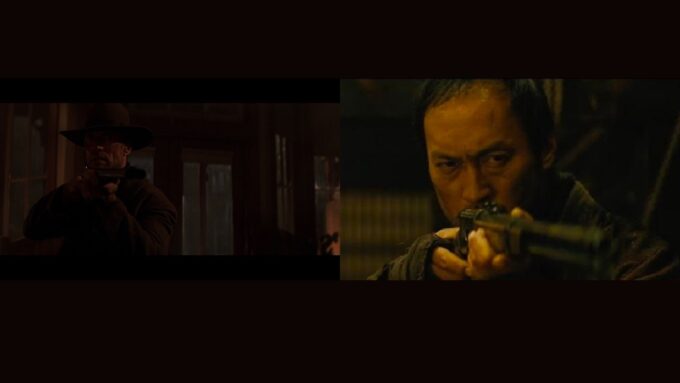
The most obvious difference between the two films is the aesthetics. The cinematography in the original is very simple and static. The camera hardly ever moves, the lighting is low, and the color palette is muted, mostly consisting of dull browns. In the remake, by contrast, the colors are much brighter, and there’s hardly a scene where the camera isn’t panning, dollying, zooming, or shaking. This might seem like a minor change, but it highlights a key difference between the two versions. If the original is a downbeat deconstruction of the Western, with simple, minimalist filmmaking to take the pomp and flash out of the genre, the remake is an aggressive, in-your-face exercise, where everything is cranked up.
In addition to the brighter colors and more mobile camera, the acting is huge, full of shouted dialogue and broad gestures, and the violence is much more graphic. Part of this has to do with the fact that the weapons being used in the remake — swords and knives — require more close-quarters contact, and it takes longer to kill someone with them. But the violence itself is much more bloody. The original film climaxes with Clint Eastwood going into a saloon, shooting some people, and walking away. But because the scene is so dimly lit, you don’t really see much blood. In the remake, Ken Watanabe slashes his way through several guys, painting the walls with blood, before setting the building on fire.
For the most part, “Unforgiven” (2013) follows the plot of the original fairly closely, though there are several changes. Some are minor — in the original, we see the prostitute get scarred straight away, while in the remake, we don’t watch it happen until later, as a flashback — and some are major.
In the original, the old man is a former thief. His regrets have more to do with personal choices he made as a killer and a bandit. In the remake, by contrast, the old man is a former samurai, who happened to be on the losing side of a civil war that opened Japan up to the West. He is a criminal, not because he was actively choosing to steal and murder, but because the authorities deemed his side to be criminals. His regrets stem from following orders, from being so foolish as to cling to a code that no longer had value. The remake actually opens with a chase scene through the snowy mountains of Japan’s northernmost island, Hokkaido, where the old man sought refuge from the authorities.
Now if you know anything about Japan, then you know that there is an indigenous, non-Japanese population on the island of Hokkaido called the Ainu. They have their own language and culture, which is different from Japan’s, and are ethnically different as well, looking more white than East Asian. They play a large role in the remake. The old man’s wife was Ainu, as is the brash young kid who tags along, and there’s an entire scene where we watch Japanese authorities harass and abuse Ainu civilians. Likewise, when Ken Watanabe kills the sheriff and his men, he tells the only survivor to not mention the kid’s involvement when recounting what happened to the authorities, for fear that it will lead to persecution of the Ainu.
This emphasis on race is completely absent from the original, which is odd, considering that America is a much more diverse country than Japan, and there are characters of color in the 1992 version. The most prominent is Morgan Freeman, who plays Clint Eastwood’s best friend. None of the white characters ever call him racial slurs, ban him from any establishments, or do any of the things that you’d expect white people to do to a black man in the late 1800s. Which honestly feels out of step with the rest of the movie, which is hellbent on getting the audience to understand that, in reality, the Old West was much uglier than they’ve been told. And yet, it’s only in the Japanese film that there’s any meaningful discussion or exploration of racially-motivated violence.
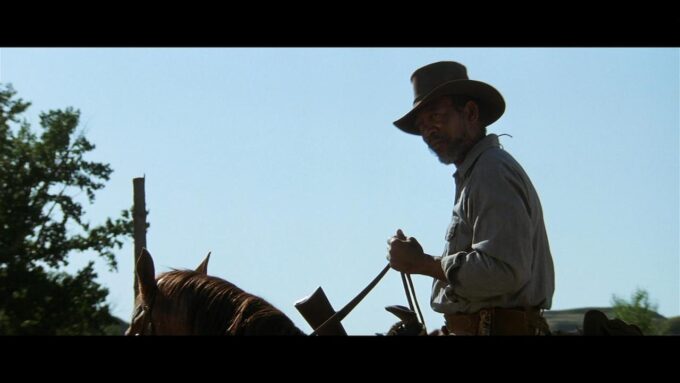
But what is perhaps the greatest difference between the two films is the scarred prostitute’s character, who has much more to do in the remake than in the original. In the original, she gets hurt, but doesn’t demand justice. It’s her friends who put up the bounty. The only real scene she has comes towards the middle when she’s caring for the old man. Unfortunately, she and him don’t get any kind of closure. And there’s no real sense for how she feels about all the killing at the end.
In the remake, however, she’s basically one of the leads. She’s still fairly passive, not demanding justice, and letting her co-workers put up the bounty. But she has far more scenes here. And unlike in the original, where the old man just rides off and leaves the prostitutes behind, he actually gives her and the kid the reward money, and asks them to take care of his children. The prostitute actually gets the last lines of the movie, remarking how this place, meaning the old man’s farm, is full of hope, and she believes she could start anew here.
She’s also much, much younger in the remake. Anna Thomson, who played the character in the original, was pushing 40 at the time of its release. By contrast, Shiori Kutsuna, who plays the character in the remake, was 19 at the time of filming, and looks even younger. Her age, more so even than her scars, is what visually sets her apart from the other prostitutes, who are all much taller, and much older. They treat her, less like a coworker, and more like a daughter they all collectively care for. And that perception as girl/daughter, rather than woman/prostitute extends to the other characters as well. For instance, unlike in the original, there’s nothing sexual about the interaction between Ken Watanabe and Shiori Kutsuna at all. Instead, she remarks how he looks like her father before he died, once again reinforcing the idea of her as an innocent, daughter figure to be protected.
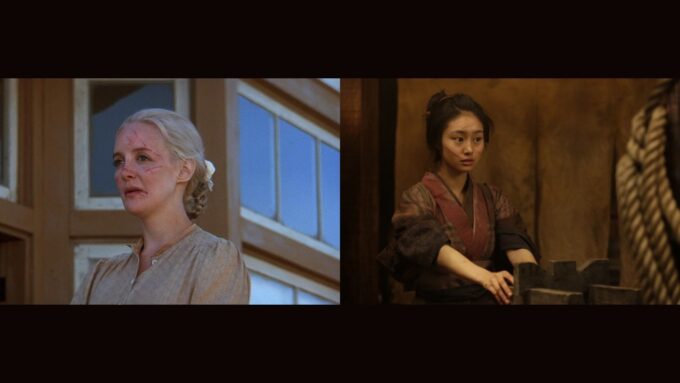
So what does all this — the more over the top violence, greater emphasis on race, and repositioning of the scarred prostitute as a daughter figure — have to say about the differences between Japanese and American society? Hard to know, since Lee Sang-Il specifically refused to answer questions like “why did you remake this movie?” at the film’s LA Eiga Fest premiere. But I can make a few educated guesses.
As for the more over-the-top violence, that could just be a result of Japanese cinema traditionally being less restrictive when it comes to depictions of explicit bloodshed. Look at some of the most famous Japanese films to come out in the last 50 years — “Lone Wolf & Cub,” “Lady Snowblood,” “Battle Royale,” any number of movies directed by Takashi Miike, Sion Sono, or Kiyoshi Kurosawa — and you notice that not only is there violence in them, but very explicit violence at that. So the more gruesome deaths could just be a result of the filmmaker not having to deal with as much censorship.
As for the greater emphasis on race, I think that might be a result of the director’s background. As you can probably tell by his name, Lee Sang-Il is an ethnic Korean, specifically a Zainichi, meaning a Korean whose ancestors came to Japan during the time of colonial rule. And if you know anything about Japanese treatment of Koreans, both during the war and afterwards, it becomes easy to read Lee’s inclusion of Japanese authorities abusing Ainu characters as some kind of commentary on xenophobia he experienced growing up. I have no evidence to corroborate that reading, as, like I said, he has refused to explain his thought process in interviews, but if you look closely at the film, it does feel like he wanted to say something about Japan’s mistreatment of minorities.
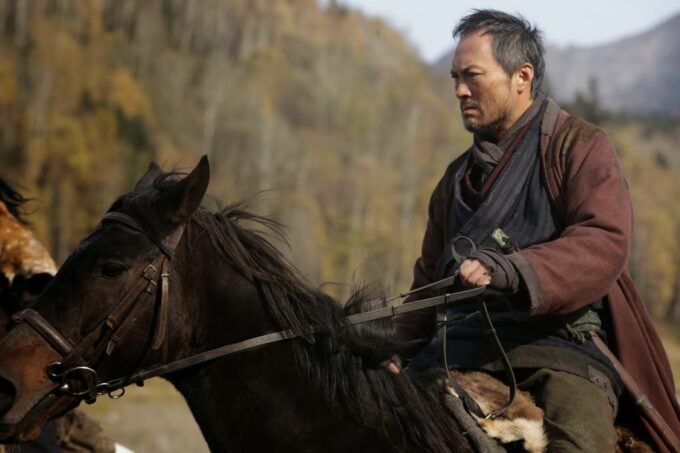
As for the prostitute being framed as a daughter, that’s harder to dissect. But I do have a theory. In America, we’re taught to focus on the individual. By contrast, many Asian cultures tend to be a bit more collectivist, placing the needs of the group first. These are generalizations, of course. But, by and large, American cinema tends to focus on the triumphs and tribulations of a single person, and that mindset is very evident in the Eastwood version, where family is almost an afterthought. Despite the fact that the film opens with text describing who his wife was, and we meet his children, the movie never does anything with them.
In the remake, family is everywhere. There’s an entire scene where Ken Watanabe meets with his father-in-law, who asks him if he’s teaching the children Ainu, and if he’d go on this killing if his wife were alive. As I mentioned, the scarred prostitute is framed like a daughter, being cared for by the older women. And the film ends with her and the Kid going to Ken Watanabe’s house to care for his children. I find it fascinating that, unlike in the original, where all the survivors just kind of slink off on their own, in this version, the happy ending for the two people who “got away” is staying together. In this film, family — not money or revenge — is framed as the most important, desirable thing, and the only people who should be entrusted with it are those who haven’t been tainted by life yet.
So, again, what does this remake tell us about the differences between Japanese and American society? You can’t expect a single work of art to speak for an entire group of people. Nor should you. Imagine how terrified we Americans would be if the only film of ours that was ever seen and studied was D.W. Griffith’s “Birth of a Nation.” It’d lead viewers to think we were all violent racists. Which is wrong, though not entirely inaccurate. There are violent racists in the U.S. and even if the tolerant do outnumber the intolerant, understanding that they exist is a key part of understanding the American story. Likewise, while it’s a generalization to state that East Asian societies are more collectivist and family-oriented, it is worth understanding that, in general, those elements are emphasized more there than in the U.S.
In the end, no single film can illuminate the “Asian Gaze” in cinema. To get a full sense for the multitude of opinions that come from one country, you’d have to watch all films made in that country. But if you want to understand other parts of the world, to recognize and appreciate that there are other ways of life besides your own, you should look at art from different nations and ask yourself, “Why is this the way it is? Why did this person make this differently than I would?” Because once you understand that, you can feel more connected to the rest of humanity. And in this time of increased isolation and xenophobia stemming from COVID-19, feeling a kinship to the rest of the population is something we could all use.

